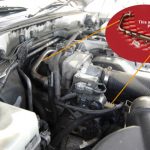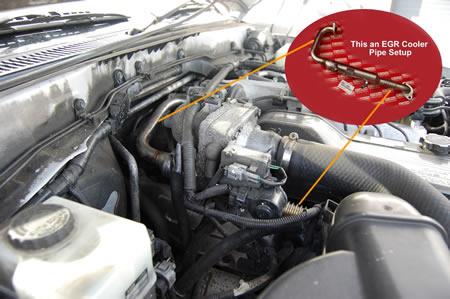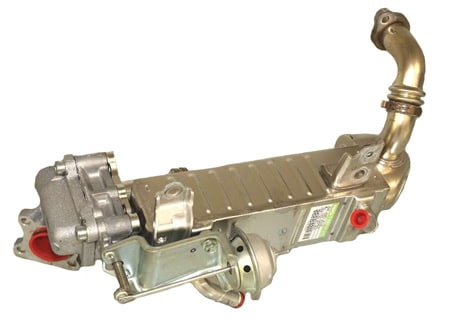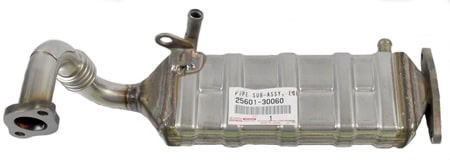A vehicle fitted with an exhaust gas recirculation (EGR) system benefits from lower combustion temperatures and reducing oxides of nitrogen emissions (NOx).
Some exhaust gases are re-introduced through the EGR valve into the engine inlet manifold, with the effect of reducing the temperatures within the combustion chamber reducing emissions.
What is EGR Cooling?
To cool the temperature even further, and meet the latest tightened emission regulations, some models now run an EGR cooler. So how does this work?
Well, in general, engine coolant flows around the EGR cooler, while the gases pass through a series of internal tubes which are surrounded by the coolant to absorb heat (basically a heat exchanger). Generally, the cooled gases pass through the EGR valve and into the Inlet manifold where it is burnt again.
Why do EGR Coolers Fail?
The problem is that these coolers are known for cracking internally, generally caused through continued hot and cold cycles or blocking EGR valves, this normally results in coolant loss via water and exhaust gases mixing then entering the combustion chamber.
When this occurs, some models (not all) fitted with sensors will trigger fault codes and warning lights.
EGR Cooler Fault Symptoms:
- Loss of Coolant
- White Smoking – caused by water entering the combustion chamber
- Poor Running
- EGR valves looking wet or like they have been steam cleaned
How do I know if I have an EGR Cooler or not?
The easiest way to spot if you have an EGR cooler is simply by looking under the bonnet. There should be an additional pipework setup from the EGR valve, some are tube-shaped, and others are rectangular. Here is an example of it fitted on a Land Cruiser 100 series.
Shapes may vary but the principles are the same.
On some models an EGR cooler can effect variations of components that Toyota fit on a vehicle, so by providing our customers with some useful background info, it may well help you to know if you have an EGR cooler fitted or not!



